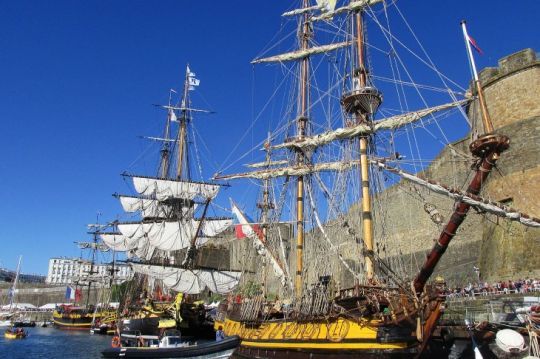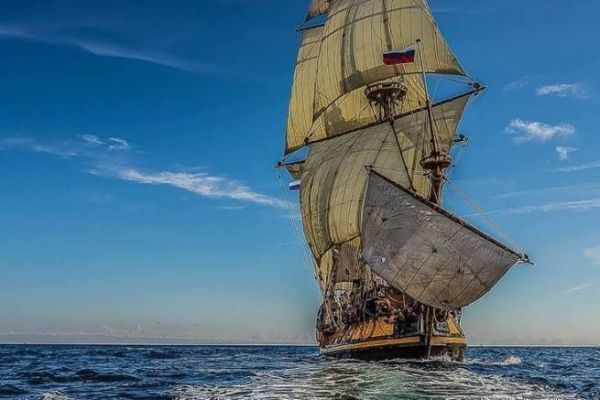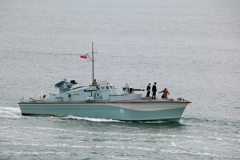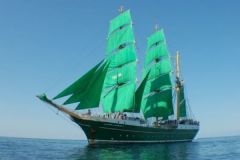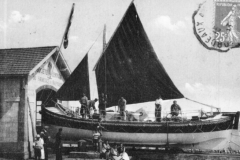A replica of the frigate built in 1703, the Shtandart, a symbol of Tsarist Russia's maritime power, is open to visitors both alongside the quayside and underway. A plunge 300 years back in time, inviting you to relive the great epics of the sailors of yesteryear.
The original 1703 frigate
In the 18th century, Russia's military success against Sweden enabled Tsar Peter the Great to claim a trade route to Europe via the Baltic Sea. To protect his lands, however, he needed a powerful navy. So he traveled to the Netherlands, then England, for several months to learn from shipwrights and admirals about shipbuilding technologies and innovations. In the process, he hired 500 experts to work in Russia.
Construction of new ships for the Baltic fleet began in 1702-1703. Two shipyards were established along the Syas and Svir rivers, plus another in Olonetsk. Dutch and English masters, along with newly-trained Russian specialists, oversaw the work. Vybe Gerens, a renowned carpenter, was commissioned to build the "Tsar's Ship". This frigate, the largest of the 10 built in just 5 months, is chosen to become the flagship of the new Baltic Sea fleet. She was christened "Shtandart", meaning "Standard" in Russian, in reference to the new trade route acquired by Russia.
Although Peter the Great's drawings have not survived the test of time, the Shtandart's appearance and structure have been reconstructed by Russian historian Viktor Krainukov, based on data from the Olonetsk shipyard.
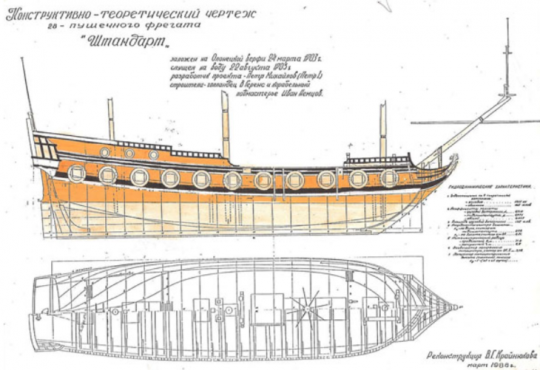
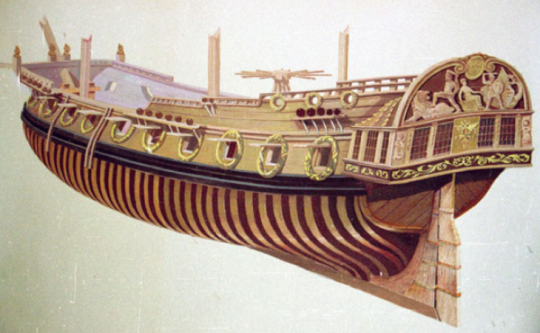
Peter the Great designed the Shtandart, drawing on the best practices of two naval schools: the shallow draught of Dutch ships, adapted to the shallow waters of the canals, and the maneuverable offshore rigging characteristic of English ships. In 1703, the Shtandart finally sailed for St. Petersburg under the command of Captain Peter Mikhailov. During her 16 years of service, the ship had several captains of international origin, including from Russia, England, the Netherlands and Norway.
After a few years, the consequences of hasty construction began to show with the deterioration of the Shtandart, particularly due to insufficiently dried wood. In 1727, a special commission decided to restore the Shtandart, but the water damage was too extensive. The ship was dismantled, and Catherine I announced a new decree: " In honor of the name given by His Majesty Peter I, I will build the new ".
History of the replica
Catherine I's decree remained unfulfilled until the turn of the 20th century, when a team led by naval architect Vladimir Martus began building an exact modern replica of the Shtandart in St. Petersburg.
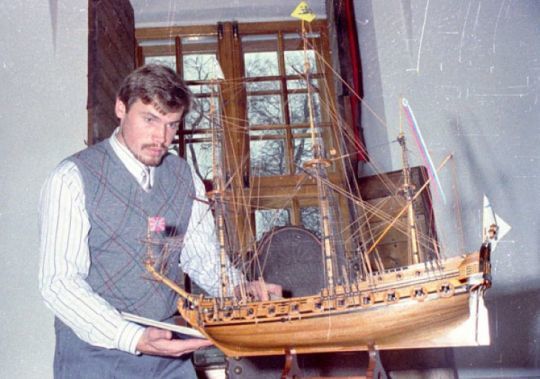

Historical technical drawings, recreated by historian Viktor Krainukov, are used to produce plans for the new Shtandart, taking into account modern shipbuilding requirements. The aim is to create a fully operational sailing yacht, meeting today's standards of safety and comfort. The boat is divided into two sections: a historic section above the battery deck, which remains faithful to the original design, and a modern section in the hold. The traditional storage areas are now equipped with two Volvo Penta TAMD 122P diesel engines, each rated at 560 hp, water pumps, tanks, a dining room, galley and crew accommodation.
In 1994, on the 298th anniversary of the founding of the Russian Navy, the laying of the keel marked the start of construction at the Shtandart Club shipyard in Orlovsky Park. All assembly work is carried out by hand, without the aid of machinery, using traditional tools.
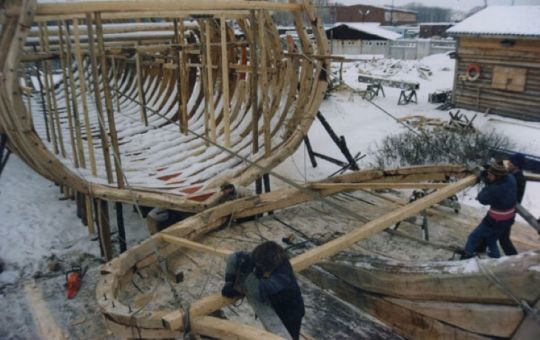

On site, many skills have to be acquired and put into practice to think like the shipbuilders of the 18th century. In 1996, the structure took on the appearance of a real boat, with all the frames in place. 12-meter-long planks, 75 mm thick and 120 mm wide, are used for the planking. Bending the planks follows a traditional steaming method: they are heated for several hours in a special wooden box, connected to a tank inside an oven built in the shipyard. Once heated to the required temperature, the planks must be fitted to the frames within 15 minutes. The quality of the fit determines the watertightness of the structure.
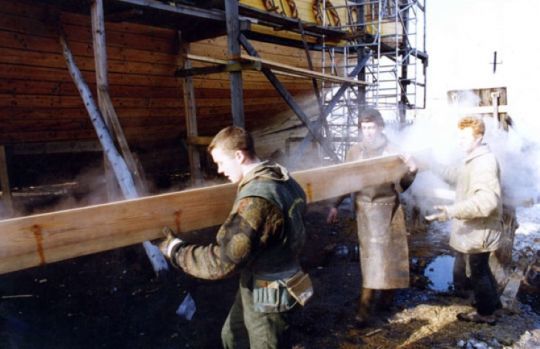
The main structure of the boat is built from oak. Larch, known for its resistance to humidity, is used for the side planking. These come from a forest, now a nature reserve, which Peter the Great had ordered to be planted for the future of shipbuilding. Special permission was obtained to fell 30 trees. Pine for the masts is found in Siverskaya.

As a flagship, the Shtandart is adorned with rich limewood carvings. Its modern version is no exception. The bulwark features a figurehead of a lion, a symbol of power and strength. At the stern of the ship, scenes of the first Russian victories at sea can be admired, as well as the coat of arms of St. Petersburg. Twenty-eight crowns decorate the portholes on either side.

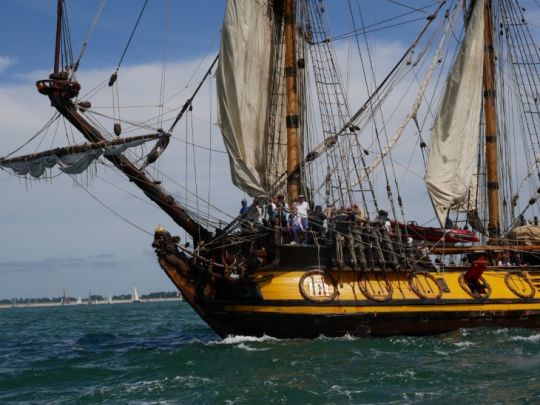
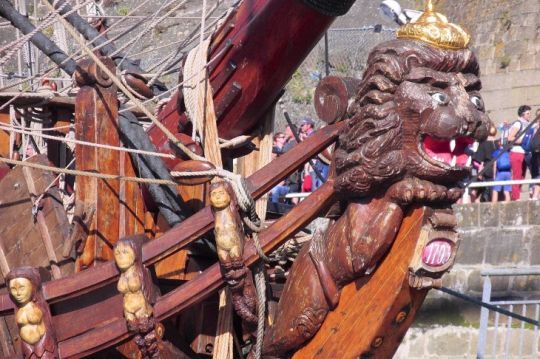
Modern synthetic materials, almost identical to the hemp and linen originals but less difficult to maintain, are used for the sails and rigging. Not intended for military use, the replica of the Shtandart is fitted with only 7 cannons, thus lightening its weight.
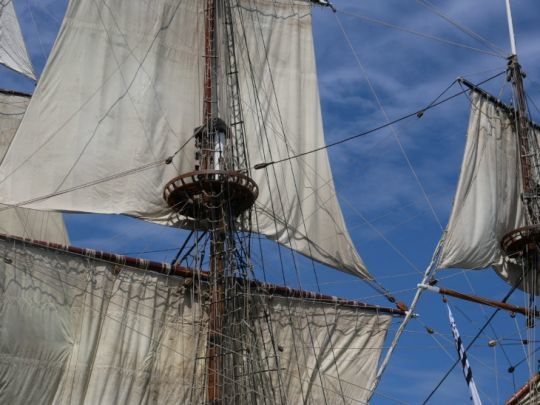
In 1998, the 34.5-meter boat was christened in the presence of the project's sponsors, the Governor of St. Petersburg, Vladimir Yakovlev, and the Duke of York, Prince Andrew.

The Shtandart was officially launched in 1999.

Rediscover the sensations of life aboard a frigate
Vladimir Martus, the main builder and project manager of the Shtandart replica, continues to sail as the frigate's captain.

Aboard the Shtandart, it's possible to experience the life of an 18th-century sailor, while benefiting from modern levels of comfort and safety. Crew members, accustomed to sharing their knowledge and experience, teach the rudiments of the bosun's trade, and those with no experience can take the helm or hoist the sails.
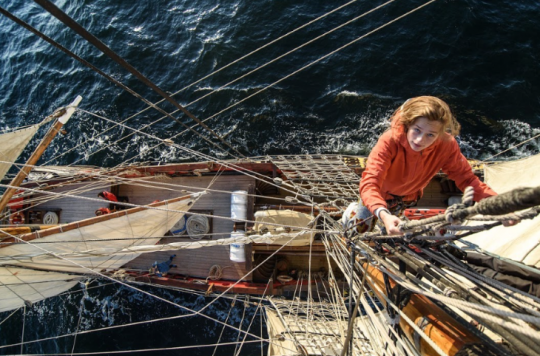
When sailing, each volunteer is assigned to a watch - 3 in all, named after the frigate's masts: foremast, mainmast and mizzenmast. During their 4-hour watch, each sailor can play different roles such as lookout, helmsman, and learn to work with the sails, all under the guidance of experienced instructors.
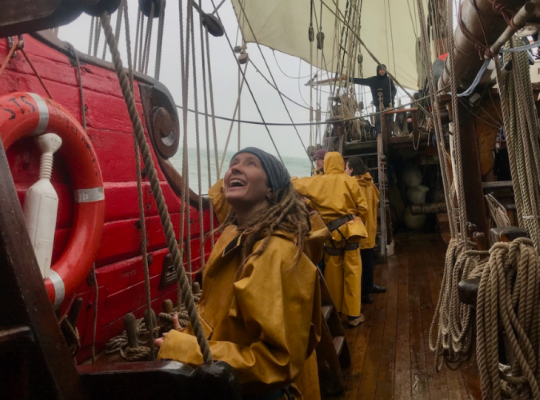
After their watch, each sailor spends four hours on standby, helping with ship maintenance and assisting the gabiers on duty. Then comes their rest time. Whether at sea or dockside, those on duty in the galley help prepare meals under the watchful eye of the cook.
Every morning, after the color ceremony, the crew of the Shtandart wash the deck and clean the living spaces, following the traditions of cleanliness established since the first Russian Naval Charter of 1720. There's always something to do, and at the end of a sail, everyone will leave with new skills.

Volunteers are also welcome aboard the Shtandart for maintenance work in autumn and winter. Every day spent helping with repairs or wintering provides an opportunity to spend a day at sea.
Discover the frigate at dockside
Self-guided tours aboard the Shtandart are also offered during ports of call, allowing visitors to immerse themselves in the daily life of sailors of the time, and discover the secrets of yesteryear's navigation, the ancestral art of shipbuilding and the history of the frigate's construction.
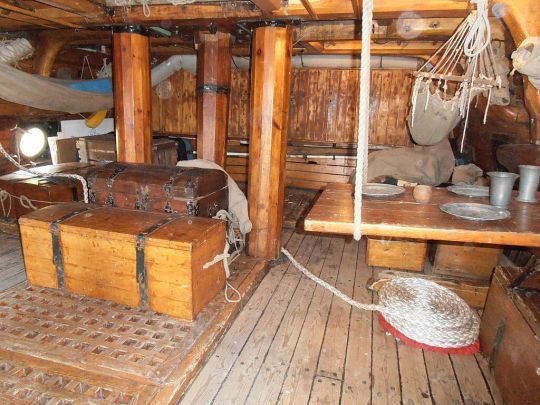
The tour takes place at your own pace, so that you have plenty of time to appreciate the different areas of the boat.
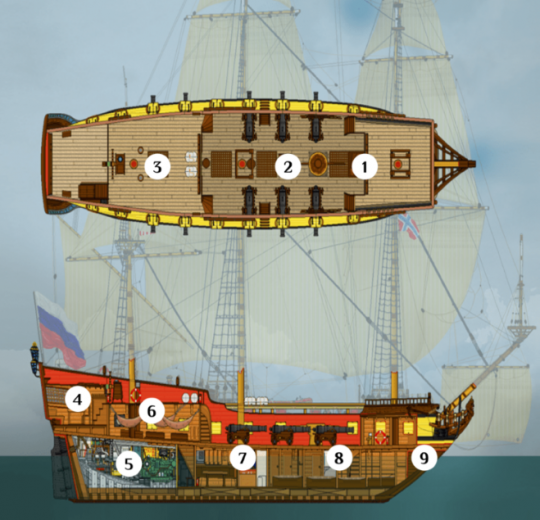
On the Atlantic coast, the Shtandart, is announced at the FÍtes Maritimes de la Rochelle, from June 20 to 23, 2024, as well as at the FÍtes maritimes de Brest, from July 12 to 17, 2024. The Shtandart will be one of the animated boats at the quayside that will not be going out to sea, to enable as many people as possible to visit this witness to maritime history.
